#Petkovden
Explore tagged Tumblr posts
Text

14 October is Petkovden. It is dedicated to Sveta (St) Petka, a fascinating and much loved Bulgarian saint. She is also equated with St Paraskeva (whose name means Friday in Greek), an 11th century ascetic who spent many years living as a hermit in the Palestinian deserts.
Sveta Petka reflects both Christian and ancient pagan elements. She stands at the crossroads between autumn and winter and embodies some qualities of an ancient goddess of the underworld.
She is the patron saint of women’s spinning and weaving, though such work was traditionally taboo on Petkovden. It was believed that St Petka would appear as a snake to those who violated the taboo.
She is associated with wolves. In some areas Petkovden marks the start of the 12 “Wolf Days,” when rituals and taboos are observed to protect against wolves. In the Troyan region Sveta Petka may take the guise of a wolf – an echo perhaps of the ancient cult of the wolf as a sacred animal.
Petkovden is the name day of my beautiful Bulgarian mum, Paraskeva, and her brother, my uncle Petko, both, alas, now gone from this world.
Image: Icon of Sveta Petka Bulgarska from the church of the same name in Rupite, Bulgaria
Source: Wikimedia Commons
#Ancient Ways#Sacred Ways#Ancestors Alive!#What is Remembered Lives#Goddess#Pagan#Christian#Petkovden#Sveta (St) Petka#St Paraskeva#Spinning & Weaving#Folkways#Crossroads#Wolf Days#Icon of Sveta Petka Bulgarska#Rupite#Bulgaria
3 notes
·
View notes
Text

~ "14 October is Petkovden. It is dedicated to Sveta (St) Petka, a fascinating and much loved Bulgarian saint. She is also equated with St Paraskeva (whose name means Friday in Greek), an 11th century ascetic who spent many years living as a hermit in the Palestinian deserts. Sveta Petka reflects both Christian and ancient pagan elements. She stands at the crossroads between autumn and winter and embodies some qualities of an ancient goddess of the underworld. She is the patron saint of women’s spinning and weaving, though such work was traditionally taboo on Petkovden. It was believed that St Petka would appear as a snake to those who violated the taboo. She is associated with wolves. In some areas Petkovden marks the start of the 12 'Wolf Days', when rituals and taboos are observed to protect against wolves. In the Troyan region Sveta Petka may take the guise of a wolf – an echo perhaps of the ancient cult of the wolf as a sacred animal. Petkovden is the name day of my beautiful Bulgarian mum, Paraskeva, and her brother, my uncle Petko, both, alas, now gone from this world. Image: Icon of Sveta Petka Bulgarska from the church of the same name in Rupite, Bulgaria." ~
1 note
·
View note
Text

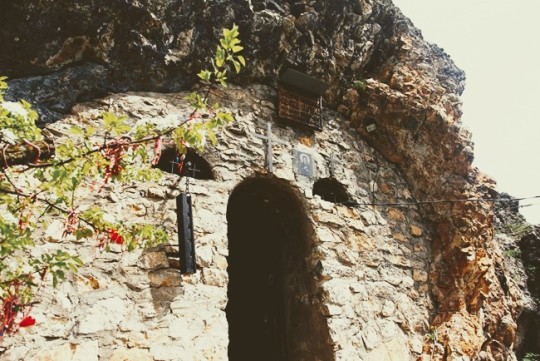
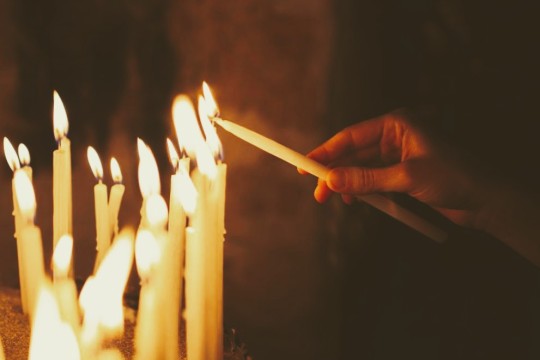
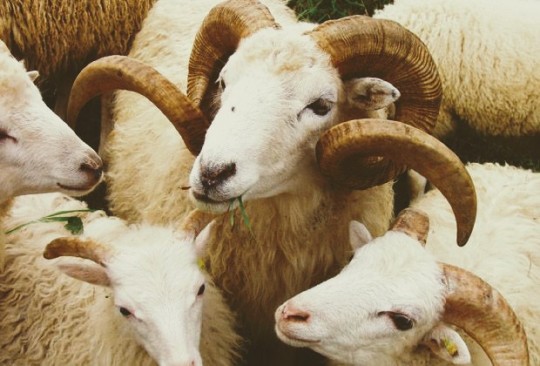
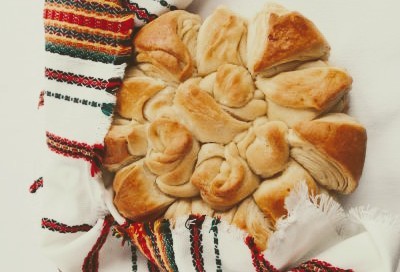
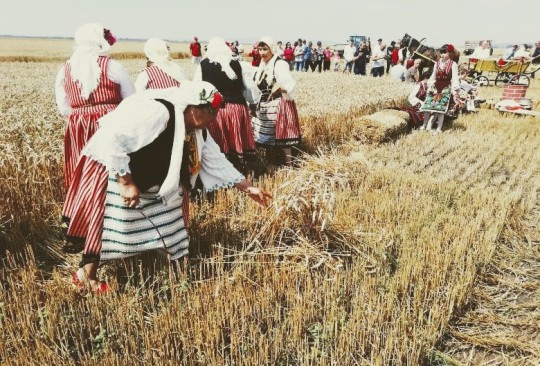
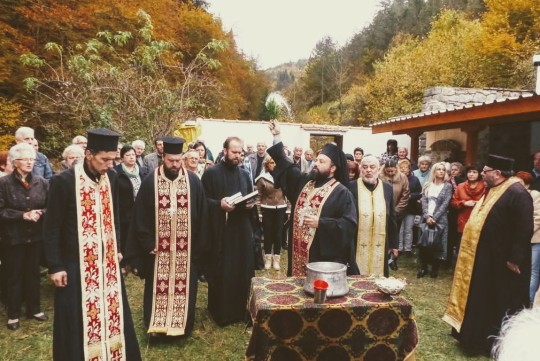
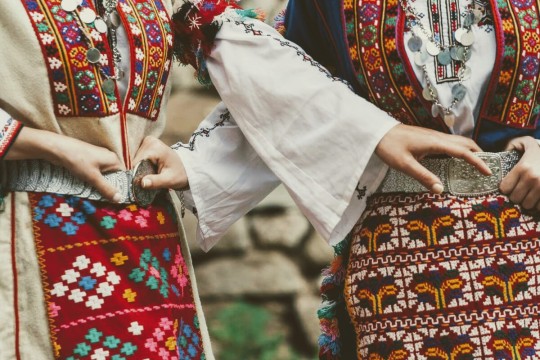
October 14th is Petkovden (Петковден), or the feast day of St. Paraskeva of the Balkans, also known as St. Petka. She is an 11th century Christian Orthodox saint and ascetic, originally hailing from the town of Epivates in modern Turkey. After being called forth by God, she gave away her possessions to the poor and lived out most of her life in the desert. Legend goes, that after she died and was buried, an old sinner who had drowned at sea was buried next to her. Paraskeva protested this by appearing in a dream to a local monk and informing him of her grave's location; when her body was unearthed it was found to be incorrupt (not decomposed.) During the following centuries, her relics would travel around the Balkans, eventually being transferred to Iași, Moldavia, where they remain to this day.
Paraskeva is traditionally one of the most highly venerated saints in Bulgaria. Between 1238 and 1393, when her relics were in Veliko Tŭrnovo, she gained the moniker "Saint Petka of Bulgaria" (Света Петка Българска) and the reputation of a protector of the Bulgarian people, and she is still revered as such today. Notably, Bulgarian tsars, such as Ivan Alexander (1331-1371) would swear oaths in her name.
On the folk side of things, Petkovden is an important agrarian holiday with ancient roots. It marks the end of the autumn harvest and sowing, and the beginning of livestock mating season, which is why it's also associated with shepherds and farm animals. Fittingly, after Petkovden begins likewise the planning of engagements and weddings. On the day itself the village would organize a feast; an animal, usually white, will be ritually slaughtered in the churchyard, a kurban would be prepared and blessed by a priest, after which everyone would celebrate by eating, drinking, singing and dancing. The holiday would function as a sgleda, in other words an opportunity for young people to meet and get acquainted, while being chaperoned by older relatives.
Petkovden is naturally the name day of anyone named Paraskeva, Petko, Petka, or any of their derivatives. Due to her connection to Friday (per her name), St. Petka is also regarded as a patron of women, children and the hearth. Infertile women will sometimes spend the night in a place dedicated to St. Petka, such as the rock chapel near Trŭn (pictured above), in the hopes that she will help them conceive. On the days between Petkovden and Dimitrovden (Oct. 26) there is a traditional ban on feminine activities involving wool – spinning, cutting, sewing – as it is believed that anyone wearing clothes made during this period will be attacked by wolves, or fall ill, die and turn into a vampire. To anyone who doesn't honor this restriction, it is said St. Petka will appear in the form of a snake.
The aforementioned time period (14.10-26.10) is the transition between fall and winter, the latter thought to kick off on Dimitrovden. Thematically, this makes it a liminal period between life and death (not unlike Friday, which signifies the end of the work week and beginning of a period of rest), ergo these restrictions exist as a safeguard against the unknown and chaotic powers, in full swing during this time. This is also why St. Petka is seen as a mediator between the two worlds, pictured in folk legends as dwelling among the dead, and alongside Archangel Michael, judging the souls who wish to be granted entry into Heaven. On Petkovden, individual families will traditionally hold smaller, private celebrations, called semeĭna sluzhba, in honor of their stopanin – a deceased relative/ancestor, seen as a protector of the household. A ritual loaf of bread would be baked and blessed with frankincense, then placed on the table onto a clean shirt, next to a small bowl of salt and a glass of wine. Every family member will proceed to take three bows before it, after which the eldest present will raise the loaf above their head and say a blessing for health and good fortune. In some regions, a special Petkovdenska Zadushnica is also held in remembrance of the dead. Petkovden is, thus, inextricably linked to rituals like Kokosha Cherkva, which similarly involve ritual sacrifice and seek to appease powers beyond human comprehension.
Petkovden, like many other Bulgarian holidays, represents a layering of Christian traditions and older, pagan beliefs and practices. It has resulted in a saint who is simultaneously a patron of Life and Death (or perhaps more accurately, what lies inbetween?), a personification of fertility and new beginnings and an usherer in of winter and darkness; a day equal parts merry and somber.
#bulgaria#slavic#eastern europe#orthodoxy#autumn#balkan#customs#petkovden#im really bummed out i couldn't write this in time for the holiday#but there you go bulgarian halloween#mythology
519 notes
·
View notes
Text
ПЕТКОВ��ЕН е!
ПЕТКОВ ДЕН Е!
На 14 октомври българската пра��ославна църква отбелязва паметта на преподобна Петка Търновска – Петковден. Преподобна Петка, наречена още Българска, е родена в град Епиват на Мраморно море през 11 век. Води благочестив живот, а след смъртта й нейните мощи, които притежават целителна сила, се превръщат в символ на борбата за съхраняване на християнската култура от ислямската асимилация.
Вижте кои празнуват днес от тук
2 notes
·
View notes
Text
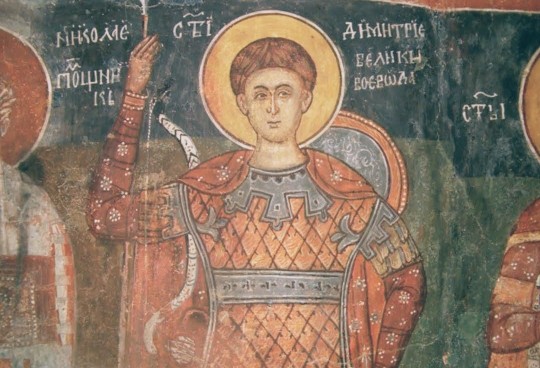
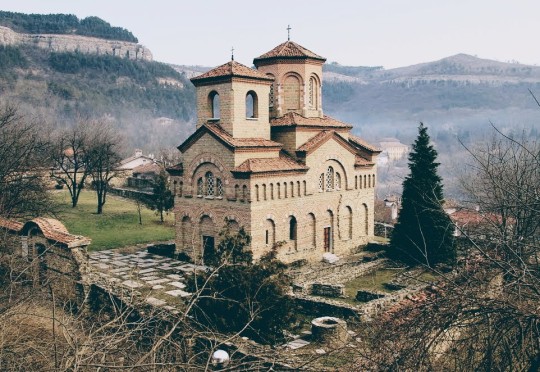


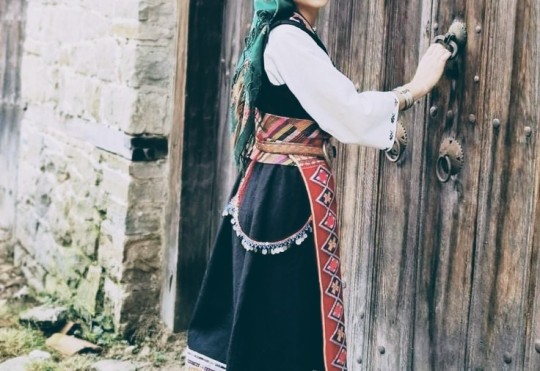
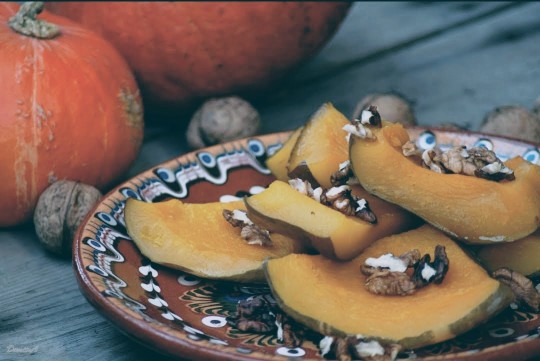


October 26th is Dimìtrovden/Mitrovden (Димитровден), or the Orthodox feast day of St. Demetrius of Thessaloniki. (Bulgarian: Свети Димитър Солунски) He is a 3rd-4th century Christian saint and great martyr (великомъченик) from the city of Thessaloniki in Greece, of which he is the patron saint.
Hagiographies refer to St. Demetrius as a young man of a senatorial family, who became proconsul and was tasked with persecuting Christians in the at the time still pagan Roman Empire. However, being himself Christian, he instead protected them, for which the emperor had him jailed. He was later speared to death as punishment for the defeat of the gladiator Lyaeus at the hands of Demetrius' disciple, Nestor. This marked the beginning of his veneration by Christians in the area, which grew in the following centuries, as he was said to guard the city against raiders.
Albeit not one originally, during the Middle Ages St. Demetrius came to be revered as a warrior saint, and iconography portrays him riding on a red horse, running a spear through various enemies — often Lyaeus, but also whoever was locally perceived as an enemy. In Greek icons, this is sometimes the Bulgarian tsar Kaloyan, while in Bulgarian ones — the Byzantine emperor Basil II The Bulgarslayer, or later on, a Turk. St. Demetrius is also associated with the founding of the Second Bulgarian Tsardom, specifically the uprising of the brothers Petăr and Asen, which broke out on Oct. 26th, 1185. The St. Demetrius church in Veliko Tărnovo (pictured above) was built in commemoration the event, and served as a coronation site of Asen dynasty tsars, who claimed him as their patron.
Traditionally, Dimitrovden marks the end of the seasonal transition from fall to winter, a period which begins on Oct. 14th with Petkovden. Bulgarian folk mythology casts the saints George and Demetrius in the role of twin brothers, whose respective holidays split the year into its warm and cold halves. The latter, elder of the two, ushers in the cold and darkness, as he rides in on his red horse and the winter's first snowflakes sprinkle down onto the earth from his beard. As St. George's opposite and counterpart, he takes on the qualities of a chthonic deity, and thus has connotations to death and the Beyond — under his patronage the so-called Dimitrovska Zadushnica takes place on the Saturday prior to Dimitrovden, one of several such holidays where food is given out in honor of deceased ancestors. Perhaps this is also why, in addition to St. George, folk imagination places him as a brother to Archangel Michael and nephew to St. Paraskeva/Petka.
Dimitrovden is the true end to the year's agrarian cycle — the harvest now over, it's time to put the farm tools away, make sure the animals have shelter and firewood is stocked up. It's also when farmhands and other labourers' contracts expire and they get rehired for the year ahead, which is why the day is also known as Razpust (Разпуст). As with other big holidays, a community-wide celebratory feast is held, and the customary ritual meal (or kurban) is mutton. The biggest ram is chosen, a pair of gold-painted apples are placed onto its horns and those present bow before it, after which it's slaughtered and cooked, and receives a priest's blessing before being served. Festivities are accompanied by music and horo (group dancing), which again has an intended matchmaking function. Namesakes of the saint celebrate the occasion, too — but they're traditionally served a chicken or rooster dish, according to gender. Other foods for Dimitrovden include corn, seasonal fruit and derived dishes, such as apple pita, pestil (a type of plum dessert), rachel (pumpkin syrup), etc.
Another activity which traditionally ends on Dimitrovden is construction work — a new house is supposed to have been completed by then, and the homeowners celebrate by throwing their own feast with a kurban, and inviting friends and relatives to witness the house being blessed by the master mason and the priest. The feast day has therefore been adopted as a career holiday of builders and masons.
The day's connection to the mysterious and otherworldly has inspired various beliefs and rituals of prognostic or divinatory nature, and anything from the weather and moon phases, to the behaviour of farm animals is observed carefully and used to make future predictions. Characteristic is the custom, known as polazvane (полазване), wherein members of the household make note of the first person to visit them, to physically cross the threshold into their home, and interpret them as a portent of things to come. Also, according to old treasure hunting legends, Dimitrovden is when "the sky opens" and buried gold emits a blue-ish flame just above ground.
Dimitrovden is part of the group of holidays, based around the idea of transition and liminality; between fall and winter, between the world of the living and of the dead. The Christian and pre-Christian symbolism intertwine, the martyr death of the saint mirrors the "death" of nature as the earth is covered in snow and daytime engulfed by darkness. And crucially — for a people whose perception of time follows nature's cycles — the coming of winter brings not only a period of calm and rest, but the promise of spring and renewal.
#Bulgaria#Slavic#Balkan#Eastern Europe#Orthodox#folklore#mythology#customs#Dimitrovden#here you go bulgarian halloween pt.2#I am again sorry it's several days later but it took a while to write ok
2K notes
·
View notes

